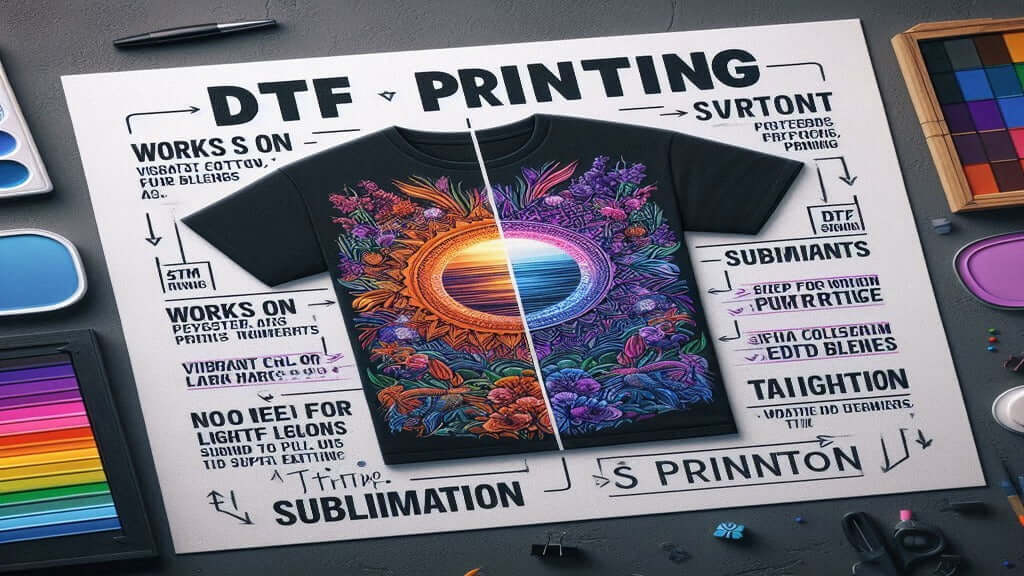
DTF printing vs sublimation
Share
DTF Printing vs. Sublimation: Which Method is Best for Your Project?
Choosing between DTF (Direct to Film) printing and sublimation can be challenging as both have their unique strengths. Here’s a breakdown to help you understand the differences and determine which method suits your needs:
1. Printing Process
- DTF Printing: In DTF printing, designs are printed onto a special transfer film using ink, and then the design is transferred to fabric or other materials using heat and pressure. It uses adhesive powder to bind the design to the surface.
- Sublimation: Sublimation printing works by turning sublimation inks into gas, which then bonds with polyester or specially coated materials. The ink becomes part of the fabric or material, resulting in a smooth, high-quality print.
2. Material Compatibility
- DTF Printing: Works on a wide range of fabrics, including cotton, polyester, blends, and even non-textile materials like wood and glass. DTF is versatile and can be used on dark and light-colored fabrics.
- Sublimation: Limited to polyester fabrics or items with a polyester coating. Sublimation works best on light-colored materials, as the ink becomes part of the fabric and doesn’t work well on dark surfaces.
3. Color Range & Detail
- DTF Printing: Produces vibrant, full-color designs with a wide color range. It can print detailed images, including gradients and photos, making it ideal for custom prints with complex details.
- Sublimation: Known for producing bright, high-resolution images with deep color saturation. Sublimation offers excellent detail and is great for photographic prints, but it only works well on light-colored backgrounds.
4. Durability
- DTF Printing: Durable with good washability, but the print sits on top of the fabric, so it may wear or crack over time with heavy use.
- Sublimation: Extremely durable as the ink becomes part of the material itself. Sublimation prints don’t fade, crack, or peel, offering long-lasting designs, especially on polyester fabrics.
5. Cost & Efficiency
- DTF Printing: More cost-effective for a wider range of materials and smaller orders. It’s a good option for on-demand printing and is less expensive when working with a variety of fabric types.
- Sublimation: Economical for bulk orders of polyester items. However, it's less flexible because of its material limitations, making it more suitable for specific projects like polyester clothing, mugs, or other coated items.
6. Feel and Texture
- DTF Printing: The print has a soft, flexible feel, but it may feel thicker compared to sublimation since it sits on top of the fabric.
- Sublimation: The design is embedded into the fabric, meaning there is no texture or feel to the print at all. It becomes part of the material, providing a soft, smooth finish.
7. Application Versatility
- DTF Printing: Can be used for a wide range of items, including cotton t-shirts, hoodies, bags, and even items like wood or glass.
- Sublimation: Primarily used on polyester fabrics and items like mugs, phone cases, or any item with a special polyester coating. Its versatility is limited to materials compatible with the sublimation process.
Conclusion:
- Choose DTF Printing if you need flexibility in the type of materials or fabrics, especially if you’re working with cotton or dark fabrics.
- Choose Sublimation for polyester fabrics or specially coated items where you want long-lasting, seamless prints with no feel or texture.
Both methods offer vibrant, high-quality prints, but the choice depends on your project’s specific material and design requirements!
